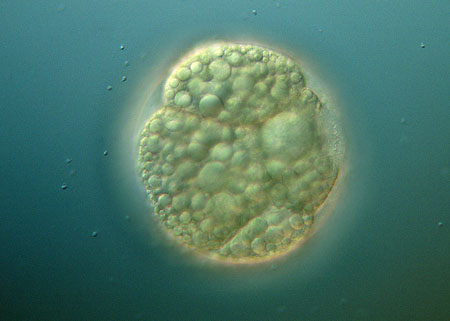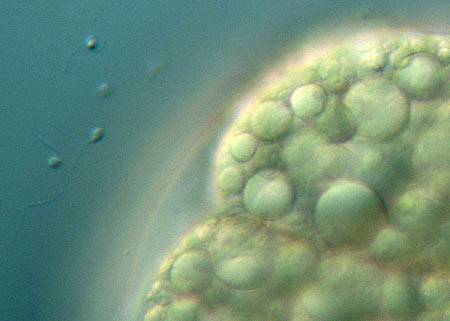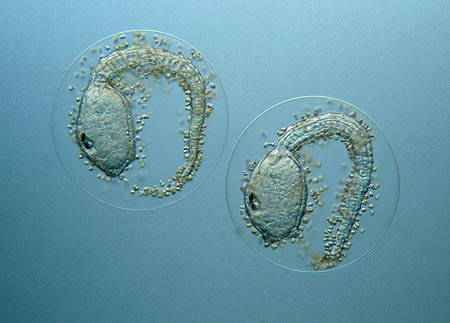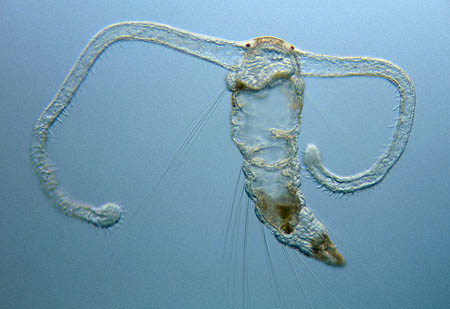and other finds from marine plankton
by Wim van Egmond, The Netherlands

|
and other finds from marine plankton by Wim van Egmond, The Netherlands |
 |
|
| In the North Sea every year several plankton blooms occur. During the spring Diatoms develop in vast numbers. The bloom of this plant-like 'phyto-plankton' is followed by a bloom of the zoo-plankton, mainly copepods and larvae of marine invertebrates. These larval stages give a magnificent glimpse into biological processes. |
| From
the end of April until June it's the right season for the study of marine
plankton. I always have to travel quite a distance to get good samples.
You need a good accessible spot to tow your plankton-net safely or to find
interesting sessile species. When observing this years spring plankton
I found some intriguing life stages I didn't expect to find. The top image
shows an egg I could not identify. Since there where many larvae of Tunicates
in the sample it could be the egg of a tunicate but it could also be an
echinoderm or another invertebrate.
When I observed it closer I noticed something quite remarkable. There were still sperm cells attached to it. This egg was fertilized very recently. |
 |
This close-up shows the characteristic shape of the spermatozoid with its long tail. I never expected to find such a thing. It shows how many observations we can do by studying organisms living in water. You can observe a range of anatomic features you normally can't see, like muscles and nerves. You don't have to dissect anything because these creatures are so transparent you can see right through them. | |
| The variety of larval stages is overwhelming. These two young Tunicates or Sea Squirts are still inside their eggs but they are already beginning to look like little tadpoles. Although these larvae resemble small fish, the adult stages are totally differenct. They are very primitive chordates, they have a so called notochord, so there is some sort of relation between these and us creatures with a backbone. | 
|
||
 |
This
little Bristle worm larva has elongated
palps that enhance their monster like appearance.
These are only some examples of the amazing small organisms you can find in the plankton of the sea. If you spend your holiday near marine waters don't forget to collect some marine microorganisms. You have to do most of the observations at the spot. You can keep the material alive for a couple of days in the refrigerator.
|
||
| In other Micscape articles you can find more information about the remarkable life stages of small marine organisms. All of of these are relatively easy to find if you use a net with a fine mesh. The sessile species can be found between the growth on jetties and poles. Look for floating platforms for boats! |
All comments to the author Wim van Egmond are welcomed.
Visit Wim's home page for links to his many web pages on microscopy
Please report any Web problems or
offer general comments to the Micscape
Editor,
via the contact on current Micscape
Index.
Micscape is the on-line monthly magazine
of the Microscopy UK web
site at Microscopy-UK